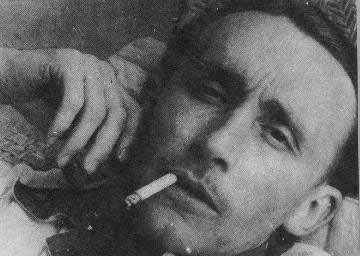
The second in a series of essays in honor of André Bazin.
The
one thing that defines the world of dreams, the spaces and the places,
the people and the creatures and the objects we find there, is that we
experience them as “real” — as having the substance and coherence of
the physical world we inhabit when awake.
It is only upon reflection after we awake that we realize how “unreal”
the dream world was we just experienced. We met the dead there,
perhaps, still alive, we discovered a new wing of the house we had not
known existed, we jumped and sprang twenty feet into the air.
We remake the waking world in our dreams in order to press it into the
service of emotional needs, but those needs would not be served if we
couldn't believe in the reality of the dream world. We may for
example feel, psychologically, in our waking life as though we are
being pursued by demons — activating primal fears of pursuit by
animals or persons intent on doing us harm. But we cannot see
those demons, which is disorienting. In dreams we give the demons
shapes, the shapes of real creatures, and thus ground ourselves in the
familiar. Of course we feel terrified by those tigers chasing us
through dream streets — they're tigers,
for God's sake, with claws and fangs. So much more reassuring,
paradoxically, than the unseen, undefined forces in waking life that
seem to be dogging our heels, bent on devouring us.
In dreams we reconcile the complexities of psychology with the
simplicities of the physical world. Dreams are a kind of
rear-guard action against advanced ratiocination, which takes us into
realms we cannot always comprehend fully or navigate.
This is not entirely a retrogressive process, since dreams re-orient us
towards the dynamics of the physical world, even if those dynamics as
they operate in dreams are not precisely aligned with the dynamics of
the physical world. There is a twofold consolation, a twofold
wisdom, in imagining psychological fears as physical threats within the
precinct of dreams. We
are, first, reminded that we live in a world of physical threats,
against which we must take precautions — emotional distress does not
obviate the need to avoid stepping in front of moving cars. At
the same time we
encourage ourselves to believe that psychological fears can be dealt
with as physical threats are dealt with — by fight or flight.
André Bazin believed that the “ontology of cinema” was rooted in the
absolute connection between the photographic image and its subject — a
connection similar to the connection between a death mask and the face
of a corpse, or a footprint and the foot that left it. This may
be an inescapable quality of the traditional still photograph, but the
source of the enchantment of cinema lies elsewhere — which is why
hand-drawn or computer-generated animation can be just as cinematic as
a photographically-based movie.
As long as a movie constructs a substantial and coherent alternate
reality it has the power to express and manipulate our emotions.
As long as it delivers the illusion of a world that is convincingly
real while we are inside it
a
film can mimic the process of dreaming. Cinema is not about, or
not only about, the mummification of reality — it is about the
translation of psychology into the realm of oneiric reality, and the
essential quality of oneiric reality is that it feels absolutely real.
Jean Renoir said that he saw Erich Von Stroheim's Foolish Wives at least ten times and that it was
the film which inspired him to dedicate his life to filmmaking. Renoir
said it impressed him with “the possibility of creating
within a film a world that might differ greatly from reality but still
would be experienced as having a wholeness and coherence like that of
the world we live in.” What else is Renoir describing but the world of dreams?
